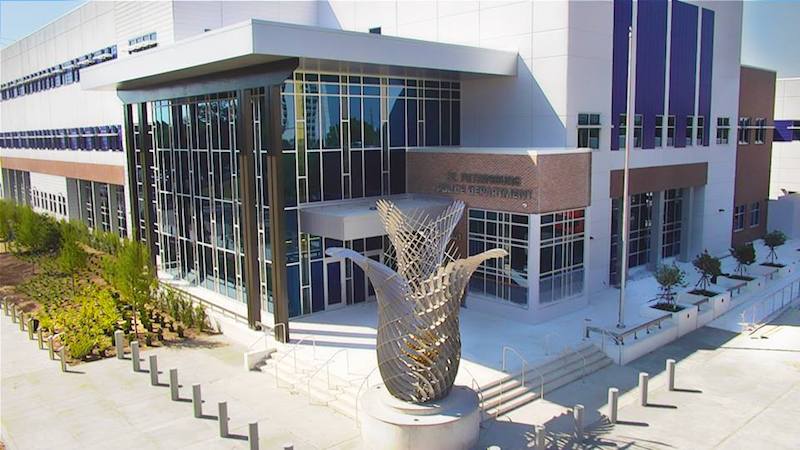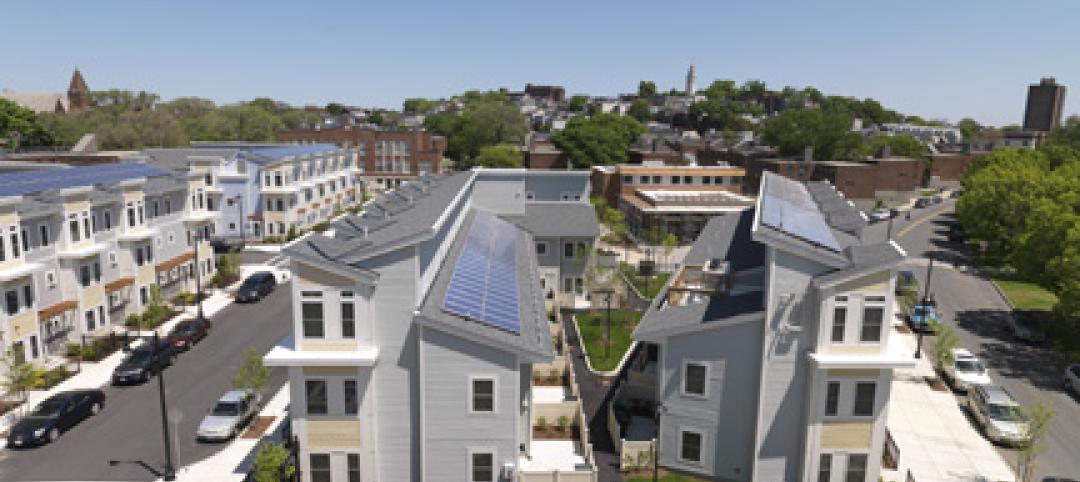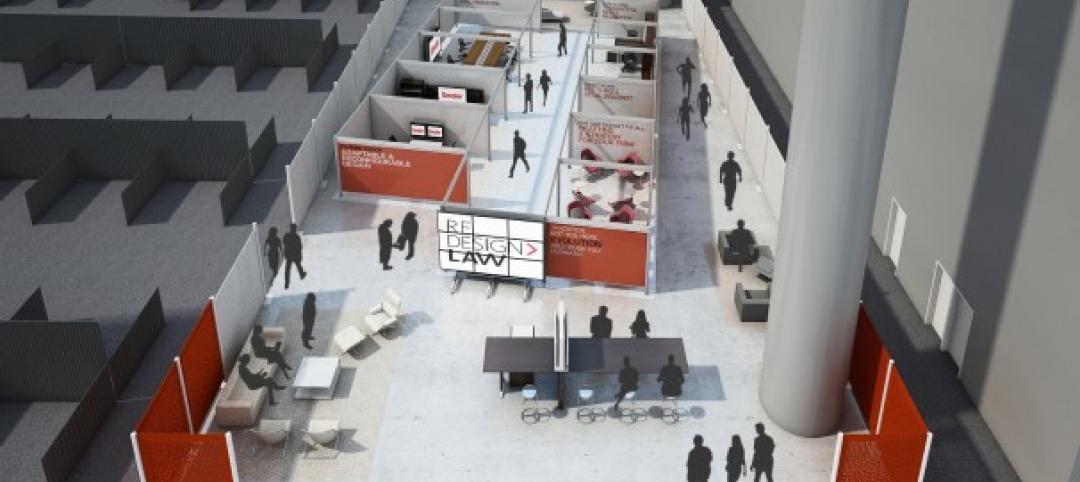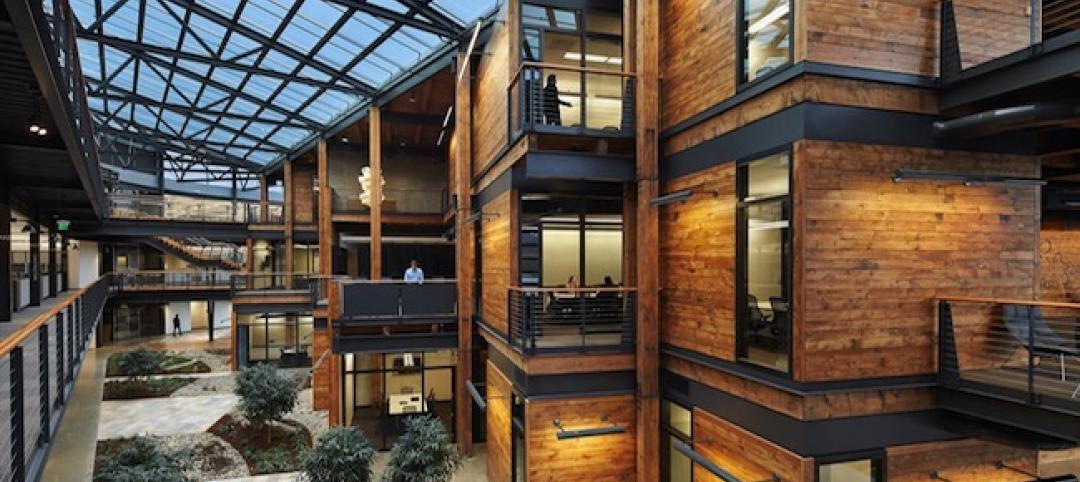The new 168,000-sf, $78.3 million St. Petersburg police headquarters building was designed and built as a new home for 526 St. Petersburg police officers and 220 civilian employees. The facility, built to withstand a Category 5 hurricane, was designed by Harvard Jolly and uses glass extensively to convey a feeling of transparency to the public.
12,000 sf of space was set aside for high-density evidence storage, which includes refrigerated storage for DNA evidence and a custom-ventilated room for narcotics. The building also includes a 3,405-sf fitness center for the officers. Air is pumped directly into the more than 500 lockers to help avoid sweaty workout clothes from creating an unpleasant odor. To further the goal of fitness, a wide staircase was placed near the officers’ entrance to encourage them to use the stairs. The elevator was placed farther down the hall.
See Also: The burgeoning Port San Antonio lays out growth plans
The headquarters also includes 1,450 solar panels on the roof of the parking deck, which is the city’s largest government solar installation.

Related Stories
| May 27, 2014
America's oldest federal public housing development gets a facelift
First opened in 1940, South Boston's Old Colony housing project had become a symbol of poor housing conditions. Now the revamped neighborhood serves as a national model for sustainable, affordable multifamily design.
| May 23, 2014
Top interior design trends: Gensler, HOK, FXFOWLE, Mancini Duffy weigh in
Tech-friendly furniture, “live walls,” sit-stand desks, and circadian lighting are among the emerging trends identified by leading interior designers.
| May 22, 2014
7 ways it pays to use BIM for data centers
Here’s where AEC firms and owners are getting the most bang for the buck when using BIM/VDC to coordinate data center projects.
| May 22, 2014
Big Data meets data centers – What the coming DCIM boom means to owners and Building Teams
The demand for sophisticated facility monitoring solutions has spurred a new market segment—data center infrastructure management (DCIM)—that is likely to impact the way data center projects are planned, designed, built, and operated.
| May 20, 2014
Kinetic Architecture: New book explores innovations in active façades
The book, co-authored by Arup's Russell Fortmeyer, illustrates the various ways architects, consultants, and engineers approach energy and comfort by manipulating air, water, and light through the layers of passive and active building envelope systems.
| May 20, 2014
Gensler envisions 'law firm of the future' with pop-up office project
Called "The Legal Office of the Future," the pop-up demonstration project made its debut this week at the annual conference for the Association of Legal Administrators in Toronto.
| May 19, 2014
What can architects learn from nature’s 3.8 billion years of experience?
In a new report, HOK and Biomimicry 3.8 partnered to study how lessons from the temperate broadleaf forest biome, which houses many of the world’s largest population centers, can inform the design of the built environment.
| May 13, 2014
19 industry groups team to promote resilient planning and building materials
The industry associations, with more than 700,000 members generating almost $1 trillion in GDP, have issued a joint statement on resilience, pushing design and building solutions for disaster mitigation.
| May 11, 2014
Final call for entries: 2014 Giants 300 survey
BD+C's 2014 Giants 300 survey forms are due Wednesday, May 21. Survey results will be published in our July 2014 issue. The annual Giants 300 Report ranks the top AEC firms in commercial construction, by revenue.
| May 5, 2014
GSA Design Awards: 20 federal buildings honored as 'best of GSA'
Seattle's Federal Center South Building 1202 and the U.S. Courthouse in Austin are among the 2014 GSA Design Award winners.
















